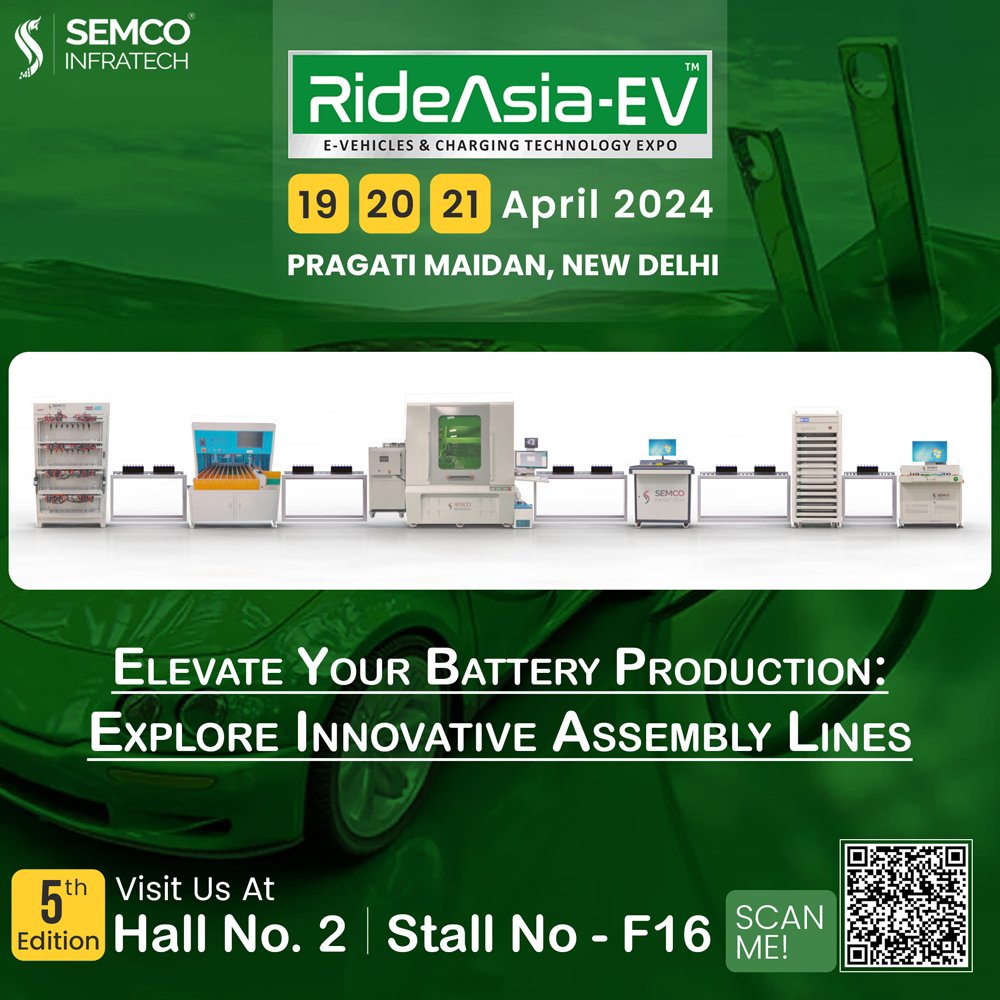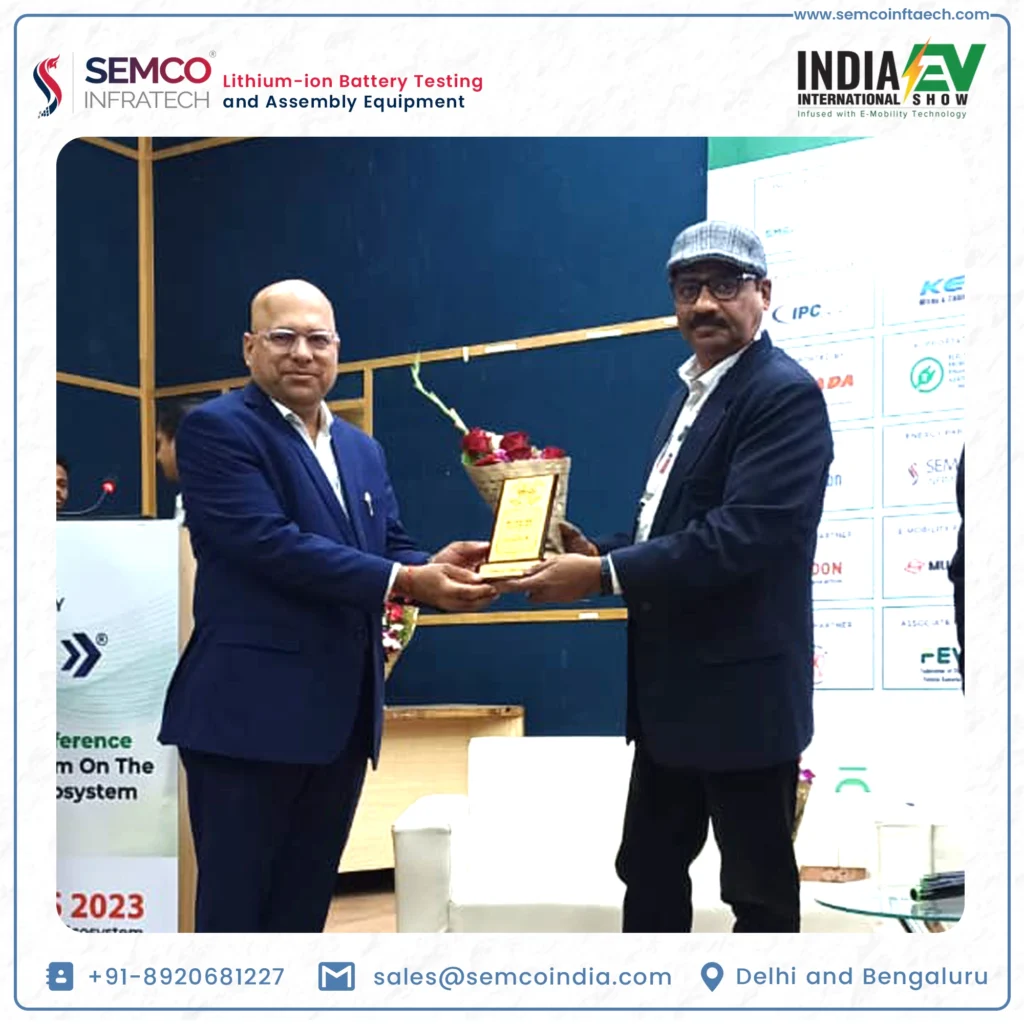


For Manufacturing Lithium-ion Batteries
Through Innovative Machines
For Manufacturing Lithium-ion Batteries
Through Excellent Service
For Manufacturing Lithium-ion Batteries
Through Research and Developement
Leading in Production Efficiency
Semco Infratech, a division of the Semco Group, distinguishes itself as a prominent player in lithium-ion battery production, testing, and assembly specializing in automation and digitization.
Semco Infratech operates in the market through key brands like Hynn & Neware. Established to cater to the growing demand for lithium-ion battery assembly equipment, Semco Infratech embodies a legacy of innovation and offers a wide range of products tailored to this sector for over two decades.
Semco Infratech provides cutting-edge lithium-ion battery assembly solutions and holds expertise in other industries as well. In battery technology, Semco Infratech delivers efficient systems for sorting testing, grading, and laser welding for efficient testing of lithium-ion batteries. Our company also offers aging machines, IR testers, and OCV testers to meet the evolving needs of modern industries.


Leading Provider of Battery Assembly Solutions
We, Semco Infratech Pvt. Ltd., are a leading provider of Lithium-ion Battery Assembly Line Equipment.
Based in New Delhi, our story dates back to 2006, when the Semco Group was looking to expand into the Energy Sector.
The group is led by Mr. Neeraj Kumar Singal and is renowned for providing innovative solutions in fields like Railways, Energy Storage, and Defense.
Our Services
Plant Planning and Setup
Annual Maintenance Contract - AMC
Why Choose Us
Here is what makes us stand apart from contenders.
Established Expertise:
Cutting-edge Technology:
Leadership in Innovation:
Customized Solutions:
Quality and Reliability:

Our Clientele






































Testimonials
Testimonials
Azad Saini
Assistant Manager-Purchase
Luminous Power Technologies
Innovation and reliability are the hallmarks of Semco Infratech's exceptional service. Their lithium-ion battery testing machines and balancers have played a pivotal role in advancing our technological capabilities.
Manjeet Singh
Assistant Manager
Okaya Power Group
We have been working with Semco Infratech for several years, and they have consistently provided us with top-quality precision test and measurement equipment.
Devendra Chawla
MD & CEO
GreenCell Mobility
Semco Infratech's dedication to delivering high-value services and innovative technologies has greatly contributed to the success of our projects.
Rohit Kumar
Energy Storage Engineer
Thermax Limited
As a global leader in energy solutions, we rely on partners like Semco Infratech to provide us with cutting-edge equipment. They are fast, simple, and precise at their work.
Neha Sharma
Co-Founder, Gosporty
Semco Infratech has been an invaluable partner in our pursuit of excellence. Their commitment to delivering state-of-the-art precision test and measurement equipment has significantly enhanced our operational efficiency.
Contact Us
We Have Innovative Solutions For Future
Global Pioneers
Energizing the future with precision energy solutions since 2006.
Innovation Allies
Partnered with industry titans, Semco sparks brilliance in every circuit.
Tailored Excellence
Your energy needs met worldwide—Semco Infratech—Providing Precision and Perfection With Pride.
For any inquiries, questions, or recommendations, please call: +91 1142641452 or fill out the following form
Blogs
Battling Battery Drain: Understanding and Minimizing Lithium Battery Self-Discharge!
For those of us working with lithium batteries, self-discharge is...
Read MoreLevel Up Your Battery Game: Discover the Power of Spot Welding!
This article explains everything you need to know about lithium...
Read MoreDouble-Sided Flexible Printed Circuits: A Deep Dive into the Manufacturing Process
Flexible Printed Circuits (FPC) have become increasingly prominent in the...
Read MoreDitching Wires for Data: The Rise of Wireless Battery Management Systems (WBMS)
Ditching Wires for Data: The Rise of Wireless Battery Management...
Read MoreEvents

Ride Asia - EV 2024
Visit Us in Ride Asia EV 2024 and find Semco Infratech’s Latest Battery Assembly Line Solutions. We’ll be at Stall F-16 in Hall No. 2, April 19-21 at Pragati Maidan in New Delhi.
Stop by and learn how our equipment can help you improve your battery production efficiency and quality.

Wonderful day at the Bharat Mobility Global Expo
Semco Infratech had a fantastic experience connecting with industry leaders, showcasing our cutting-edge lithium-ion battery assembly line solutions, and forging valuable partnerships.

The Battery Show India
Semco Infratech! We had the opportunity to showcase our expertise in the battery industry, while also catering to attendees and sharing our best-in-class lithium-ion battery testing and assembly equipment.

The India International EV Show⚡2023
We experienced a range of breakthrough innovations in electric mobility. The event showcased cutting-edge advancements that are revolutionizing the way we think about transportation. We met a number of clients and managed to crack some wonderful deals there.





